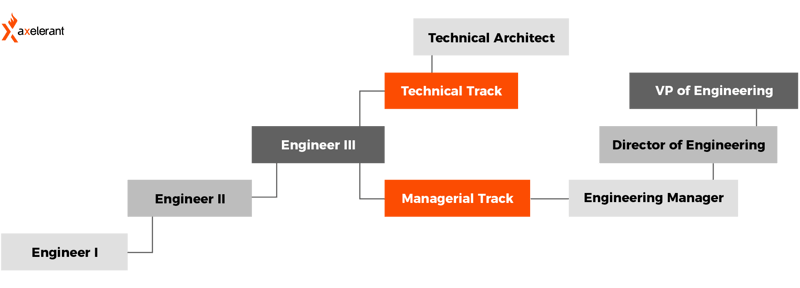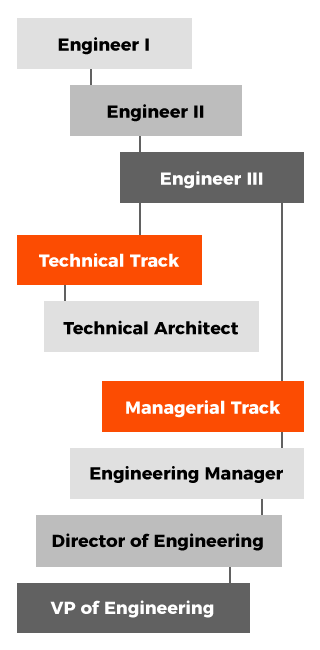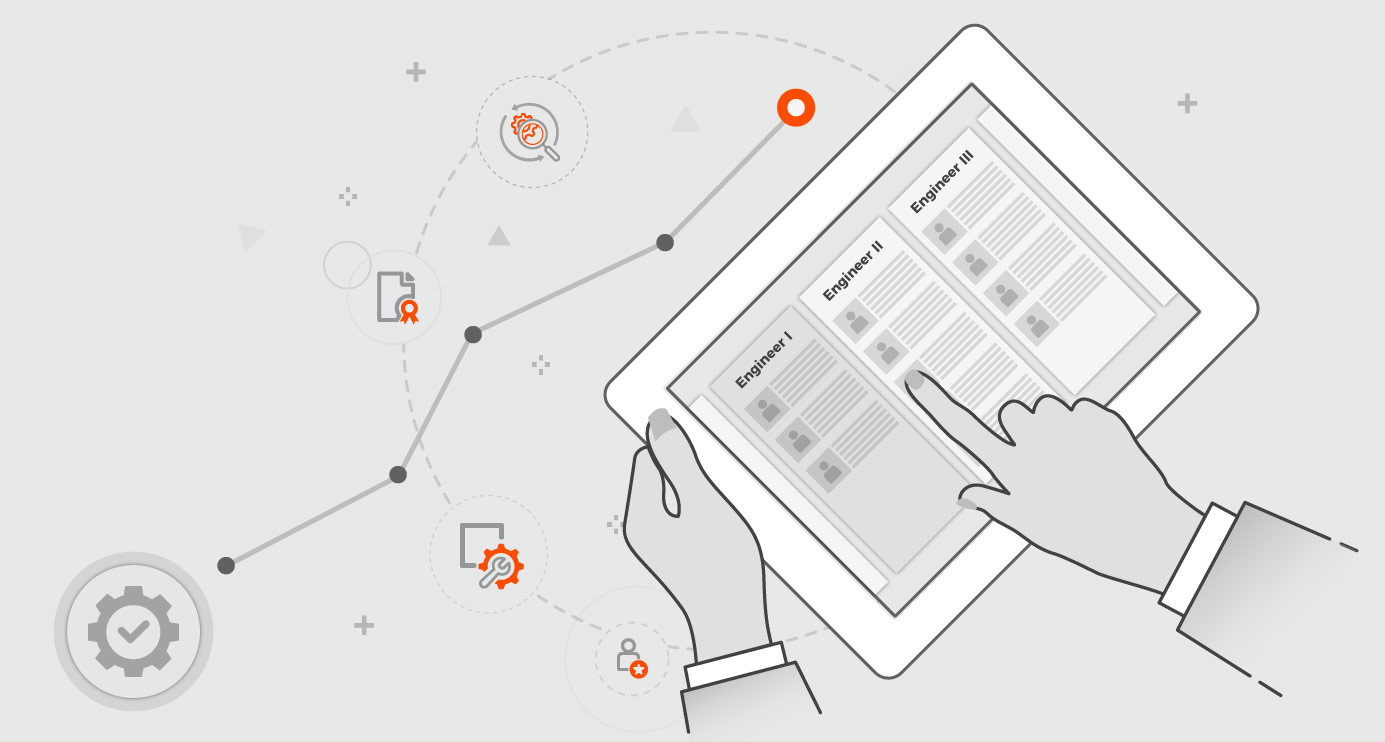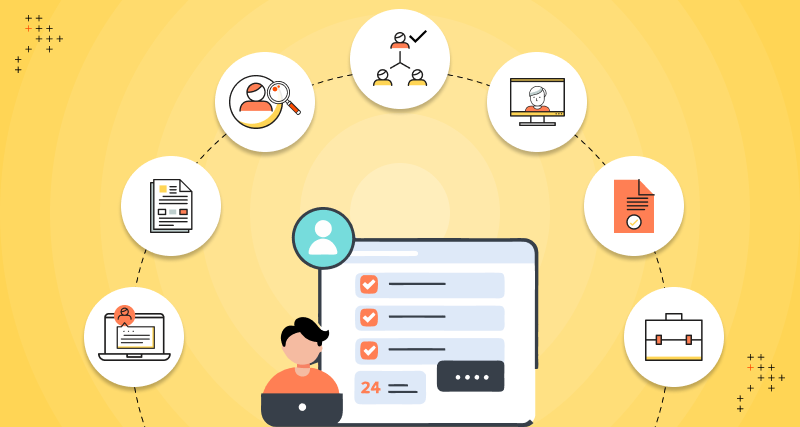Introduction
A career ladder is a roadmap which details the various stages and pathways available for an employee’s journey within an agency. It demonstrates how employees can advance to higher levels in skills and responsibility. When our team members have displayed potential, showcase our values, and have gained the knowledge and experience needed to meet established criteria, they achieve upward mobility.
Having an engineering career ladder for us means investing in our people, who always have a path forward within our organization. Adding structure to operations gives guidance and clarity to teams as well as management, enabling the agency and individuals to grow together.
What is a Career Ladder & Why Do We Need It?
The most obvious reason for any organization to have a career ladder is that it supports mutual development. The document functions as a career map, allowing individuals to easily identify a direction. With a clearly defined career ladder, even when things get challenging, you always know exactly how to advance your career, and can clearly see opportunities in the future.
Having a career ladder means that employees at higher levels are recognized for their greater contributions. It also ensures fairness and transparency across the organization.
Mapping skill sets with the career ladder makes it easier for everyone to understand where individuals stand in their career paths, and what gaps need to be filled for them to move to the next level. This not only helps set goals for each individual, but also helps align salaries with roles in a clear manner, eliminating anxiety and confusion inhouse.
A career ladder also shows employees that they are valued members of a team, and that the organization is invested in and committed to them. This also helps organizations attract and retain the best talent, as employees are motivated to perform and highly engaged.
Well designed career ladders can also help set the expectations while assigning mentors within the team, assigning tasks to employees, or while hiring for staff augmentation or other types of engagements. When cost is aligned with the career ladder in the IT industry, it provides clear visibility into the skill set and experience level that can be expected from any individual. This provides a easyier way to make hiring decisions.
A dynamically structured and carefully implemented career ladder helps support engineers in developing not just technical expertise but leadership and communication skills as well. It encourages engineers to be mature and empathetic when interacting with team members, to communicate well, to question assumptions, request feedback and act constructively on it.
As our people grow, they learn to anticipate and address problems effectively, make sound business decisions, as well as motivate and inspire others around them to grow—all of this should be considered.
Designing an Effective Career Ladder
Organizations can function without well-defined career ladders, but as they grow and if they're looking to retain quality talent designing one becomes a priority.
If the career ladder is not thought through or not implemented well, it can create more problem. But having a poorly designed career ladder can very often confuse employees and demotivate them if, for example, it doesn't contain enough detail for them to correctly place themselves within it. It can also lead to ad hoc promotions and unnecessary roles within organizations, creating inefficiency and decreasing employee satisfaction and customer success.
At Axelerant, we invest in our staff through a range of progressive policies and employee centered initiatives. Defining our career ladders helps us bring out the best in our teams and set the right expectations.
We share the career ladder document with everyone in the organization, which helps our team members understand what’s expected of them, what their advancement path looks like, and what they need to do to advance.


Within our software engineer career ladder, we focus on four major aspects:
-
Technical Skills
-
Get Stuff Done (GSD)
-
Impact
-
Communication & Leadership
These are our levels: Engineer I, Engineer II, Engineer III and Technical Architect. For each level, we have defined expectations under the four categories. As engineers move up the career ladder, these expectations become more challenging, as shown below for Engineer I.
Engineer I |
|||
|
Technical Skills • Broad knowledge of core CS concepts |
Get Stuff Done (GSD) • Develops their productivity skills by learning source control, editors, the build system, and other tools as well as testing best practices • Capable of taking |
Impact • Developing deeper knowledge of 1-2 large architectural areas |
Communication & Leadership • Effective in communicating status to the team |
Technical expertise is further categorized into the levels, which are:
Familiar. You know what the technology is and what its fundamental use cases are. You’ve done some small projects with the technology.
Knowledgeable. You’ve done production projects with the technology and are fluent with the syntax and terms.
Expert. Your understanding of the technology goes beyond the basics; you fully understand the underpinning technologies and performance characteristics.
Skill |
Engineer I |
Engineer II |
Engineer III |
Technical Architect |
PHP |
||||
| OOPS in PHP | Familiarity | Knowledge | Expert | Expert |
| PHP Internals - Memory Management, Garbage Collection, Other Internals | Familiarity | Knowledge | Expert | Expert |
Concepts |
||||
| Design Patterns | Familiarity | Knowledge | Expert | Expert |
| Data Structures | Familiarity | Knowledge | Expert | Expert |
| MVC / MVVM / MV* | Familiarity | Knowledge | Expert | Expert |
Drupal API’s |
||||
| Writing Modules | Knowledge | Expert | Expert | Expert |
| Drupal 8 Entity API’s | Familiarity | Knowledge | Expert | |
| Theme API / Libraries | Familiarity | Knowledge | Expert | Expert |
Data Stores |
||||
| MySQL / MariaDB / PostgreSQL | Knowledge | Expert | Expert | Expert |
| Memcached | Familiarity | Knowledge | Expert | Expert |
| Redis | Familiarity | Knowledge | Expert | |
JS Frameworks |
||||
| ReactJS | Familiarity | Knowledge | Knowledge | |
| AngularJS | Familiarity | Knowledge | Knowledge | |
| node.js | Familiarity | Knowledge | Knowledge | Knowledge |
We frequently update the technical skill set to keep our engineers aligned with the fast growing technology and support their career growth. We have defined separate skills for our Backend, Frontend, QA and DevOps Engineers. This serves as a guideline for improving technical skills, which helps with employee development at Axelerant.
Each successive level represents a more challenging role than the previous one. We’ve found it’s also important to provide two or more tracks in the career ladder after a certain point. At Axelerant, we have two tracks: Managerial and Technical.
At higher levels on both tracks, the expectation is to provide leadership, along with the ability to engage groups of people within the technology and outside the technology. The managerial track can take employees to positions like Engineering Manager, Director of Engineering, VP of Engineering, and so on.
Share your perspective on career development with others
Our take is that the right career ladder leads to happy employees, and happy employees deliver great work, which drives business success. These help with individual’s career development and have a lot of impact on organizational growth.
We believe it’s important for all organizations to consider designing the right career ladder for their teams, but employee advancement is done differently at different orgs. What about yours?

Prateek Jain, Director, Digital Experience Services
Offline, if he's not spending time with his daughter he's either on the field playing cricket or in a chair with a good book.

 We respect your privacy. Your information is safe.
We respect your privacy. Your information is safe.



Leave us a comment